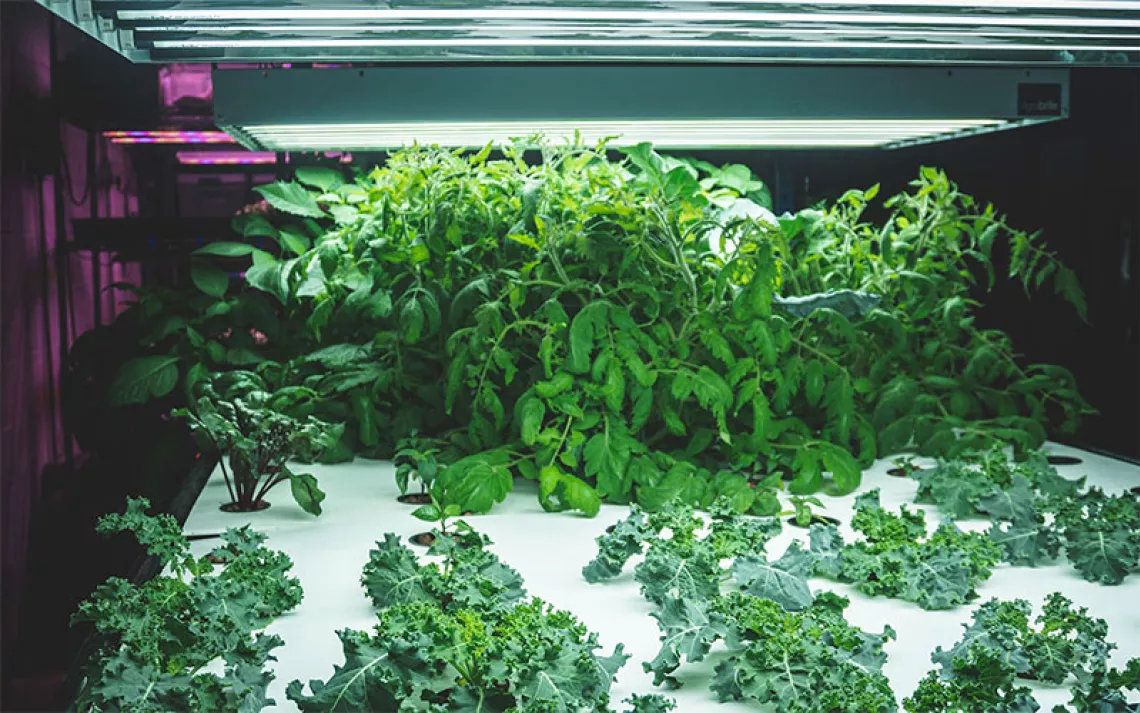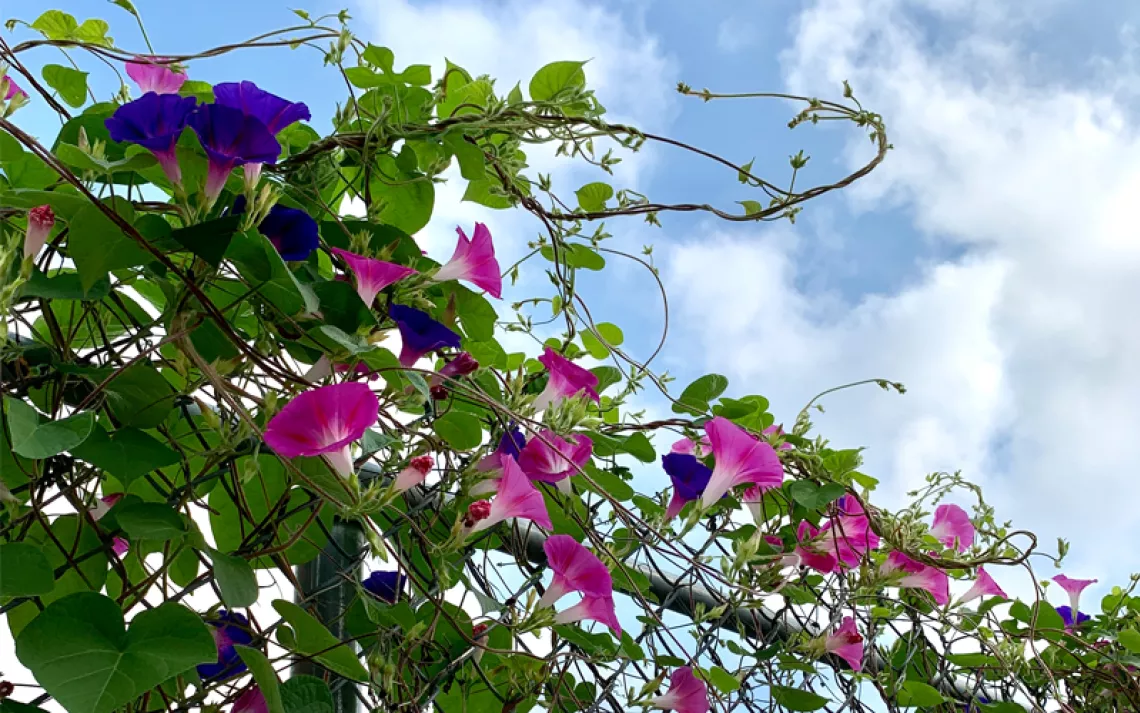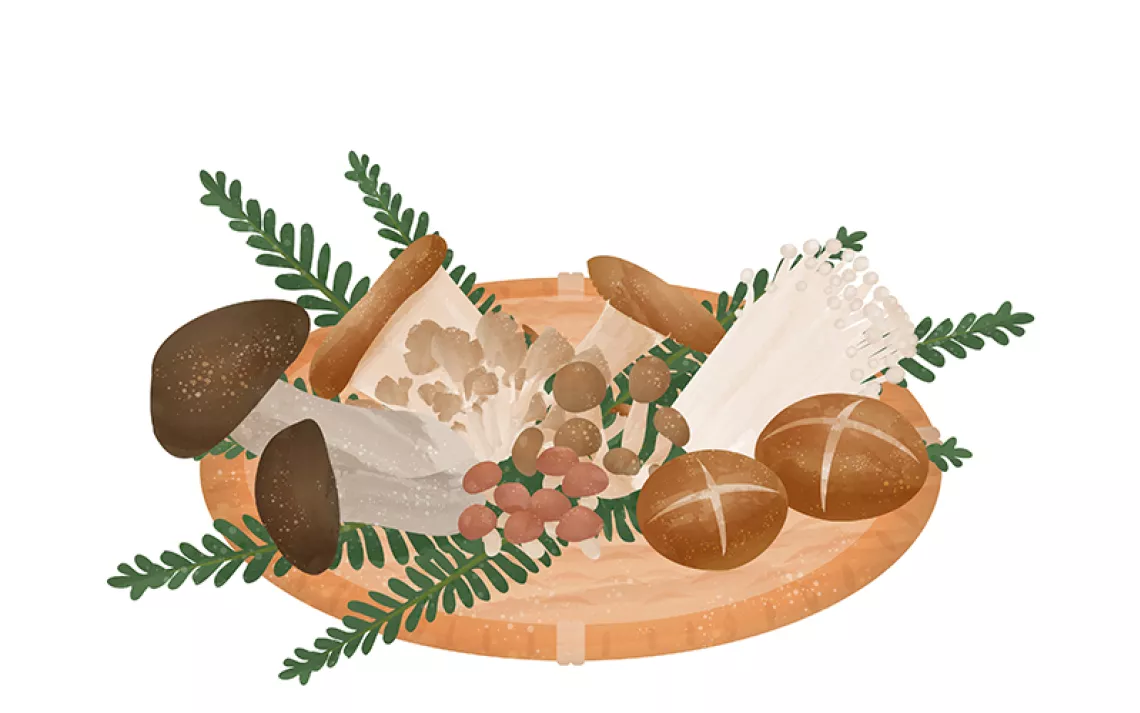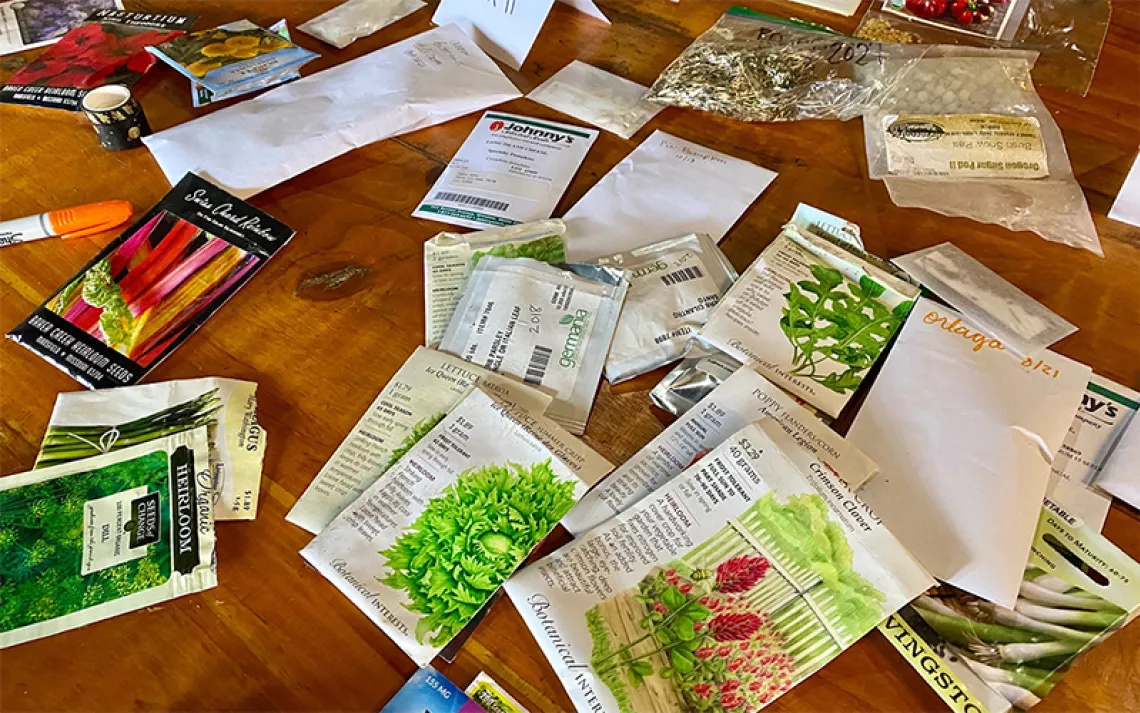The Art of the Dry Garden
15 ways to conserve outdoor water use—without sacrificing the beauty of your home garden
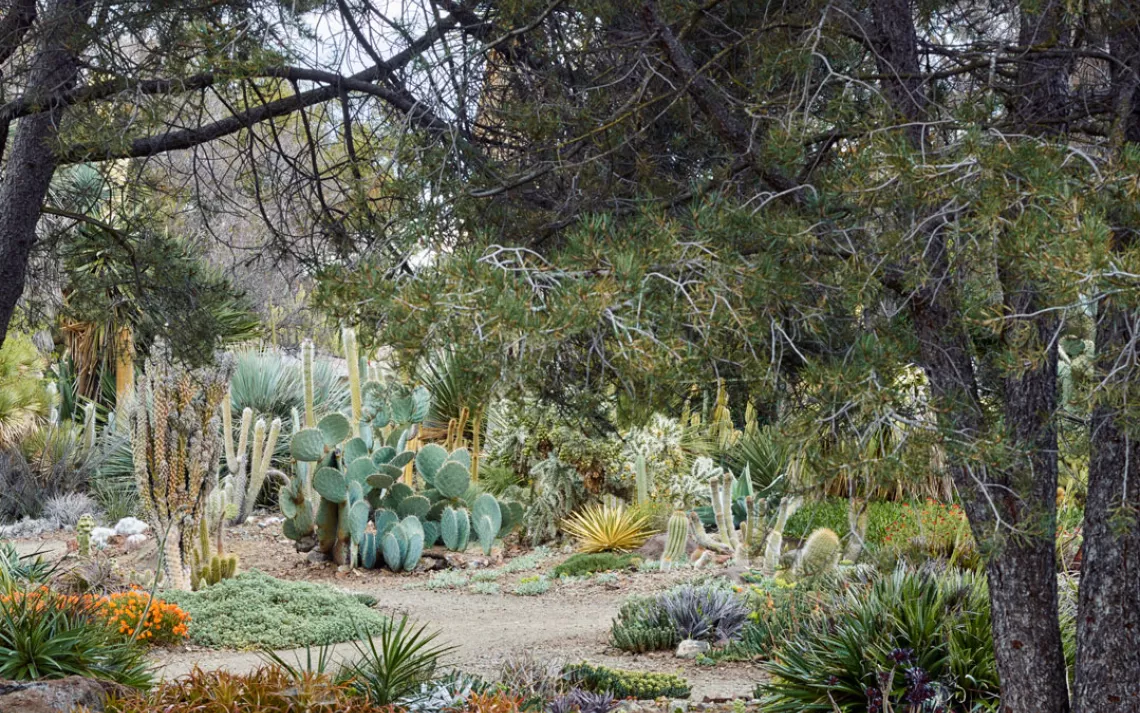
The Ruth Bancroft Garden. | Photo courtesy of Timber Press
In the 1950s, a middle-aged gardener named Ruth Bancroft planted a single succulent on her family’s pear-and-walnut orchard in the Bay Area suburb of Walnut Creek. Before long, Bancroft developed a passion for drought-tolerant plants, and by 1988 had amassed such a varied collection of succulents, aloes, yuccas, and agaves that visiting horticulturists Frank and Anne Cabot were inspired to form the Garden Conservancy, a nonprofit organization dedicated to preserving significant American gardens. Today, the four-acre Ruth Bancroft Garden (which opened to the public in 1992) is a stunning showcase of succulents with an educational mission to help visitors learn to better preserve and cultivate desert and dry-climate plants—many of which are disappearing from their native habitats.
Last month, Bancroft celebrated her 108th birthday as well as the release of Timber Press’s The Bold Dry Garden: Lessons From the Ruth Bancroft Garden. Authored by Sunset magazine’s garden editor, Johanna Silver, the book is a lush, pictorial guide to Bancroft’s breathtaking dry garden and, as its subtitle suggests, also reveals many of her time-tested dry gardening techniques and tips.
With drought—including extreme drought—continuing to grip much of the West, as well as some parts of the Southeast and Northeast, home gardeners would be wise to take a cue from Bancroft and embrace xeriscaping. That’s the term for a water-conserving approach to landscaping. The word traces back to the Greek root xeros, meaning dry; the objective of xeriscaping is to design, install, and maintain an ornamental landscape featuring plants so well-adapted to their environment that they require no supplemental irrigation.
In many parts of the country, this is the perfect season to undergo a yard makeover. According to Robert Kourik, author of 2015’s Understanding Roots: Discover How to Make Your Garden Flourish, fall is prime time to xeriscape a garden or yard. “In the West, especially, October and November, when plants are dormant, is ideal,” he says. “This way, gardens are looking beautiful by spring, and plants are well-established before summer heat and drought conditions set in.”
While gardeners in the drought-ravaged West have long faced water restrictions, xeriscaping is increasingly relevant everywhere, as climate change and population growth join forces to deplete water supplies. And considering Kourik’s claim that 50 percent of most homeowners’ water use occurs outside the home, drying off your green thumb translates to great news for your budget. Sierra consulted with Kourik and other gardening experts to learn easy ways homeowners can, if not zeroscape, then render their yards and gardens more water-wise—and planet-wise, too.
1) Go native. Because they’re adapted to local soil and weather conditions, indigenous flora isn’t too fussy—i.e., it doesn’t require much, if any, supplemental water. “Native plants also support native birds, bees, and other wildlife by providing food, shelter, and places for nesting,” explains landscape designer Deborah Austin, owner of San Diego’s Vintage Gardens.
Missy Henriksen, spokesperson for the National Association of Landscape Professionals, agrees. “Think moisture-loving ferns for gardens in the Pacific Northwest,” she suggests. Likewise, in the Plains states, plant native wildflowers, and if you live in the desert, plant cacti.
Cassy Aoyagi, president of Los Angeles’s FormLA Landscaping, explains that native flora has the added advantage of protecting your yard from the threat of fire. “When we choose plants ill-adapted to manage a region’s full range of temperatures and rainfall, we weaken the resilience of our wild spaces,” she says. “For instance, a plant that can’t withstand Southern California’s local heat is more likely to die off, leaving fuel for wildfire.” Aoyagi points to “highly invasive” pampas and fountain grasses as plants often promoted as drought-tolerant, but that tend to fuel wildfires when introduced to Southern California hillsides.
Kourik points out that dedicated dry gardeners need not feel completely limited to native flora. Do some research on your climactic cousins. Northern Californians, for instance, could seek plants from the Mediterranean basin, the middle elevations of the Chilean mountains, portions of South Africa, and parts of Australia. “Plants from these areas,” Kourik says, “will adapt to native climate and soil and still retain their superior drought-hardiness.”
2) Hydrozone. One of the underlying principles of xeriscaping, in addition to selecting water-wise plants, is to group them wisely—a process that’s referred to as hydrozoning. “This doesn’t mean you need to fill your yard with cacti,” Kourik says. “But just as you would plant beds based on your plants’ particular needs for sunlight and shade, follow the same logic for water usage.” Group thirsty annuals together. Do the same with native perennials, and you’ll find yourself watering more efficiently.
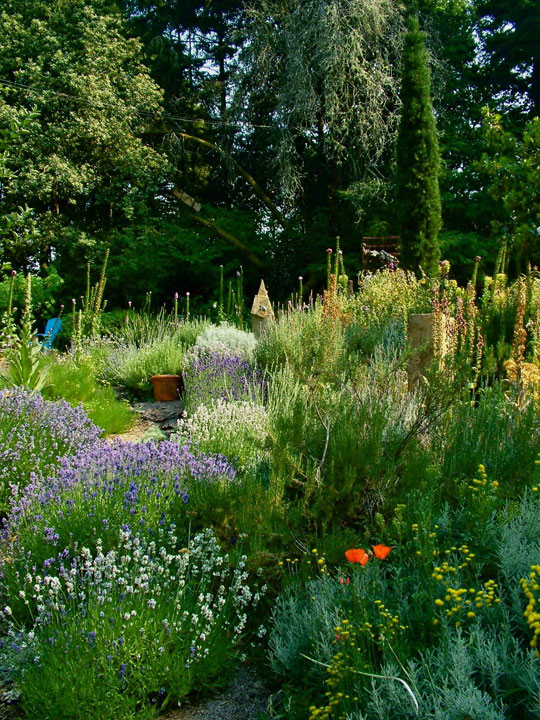
Robert Kourik's home garden. | Photo courtesy of Robert Kourik
3) Seek plants that naturally store moisture. “A quick and easy tip,” offers Henriksen, “is to check the leaves for thickness, and for fine hairs, which will keep moisture trapped inside the plant. Think hydrangeas, wax begonias, bear’s paw, and dusty miller.”
Kourik opts for evergreen drought-hardy perennials, such as red hot poker, matilija poppies, tower of jewels, foxgloves, Siberian wallflowers, and green santolina.
4) Get to know your plants’ cycles. In the eastern United States, spring planting makes sense, but western gardeners often don’t understand that arid and semiarid climates call for fall planting. Kourik explains: “Because of California’s milder winter temperatures, the soil stays warm enough for some gradual root development to take place during the rainy season. While plants may appear virtually unchanged during winter, the root system is growing wider and deeper, in preparation for the growth of spring, and the drought of summer.” Translation: Fall- and winter-planting gives Californian root systems a head start on the challenge of weathering summer’s dried-up soils.
5) Ensure proper drainage. Keep in mind, xeric plants tend to thrive in rocky environs and thus can’t tolerate much rain. In fact, Kourik says such plants should be planted in very gravelly soil, with little clay or organic matter, and planted on raised mounds so as to encourage water drainage.
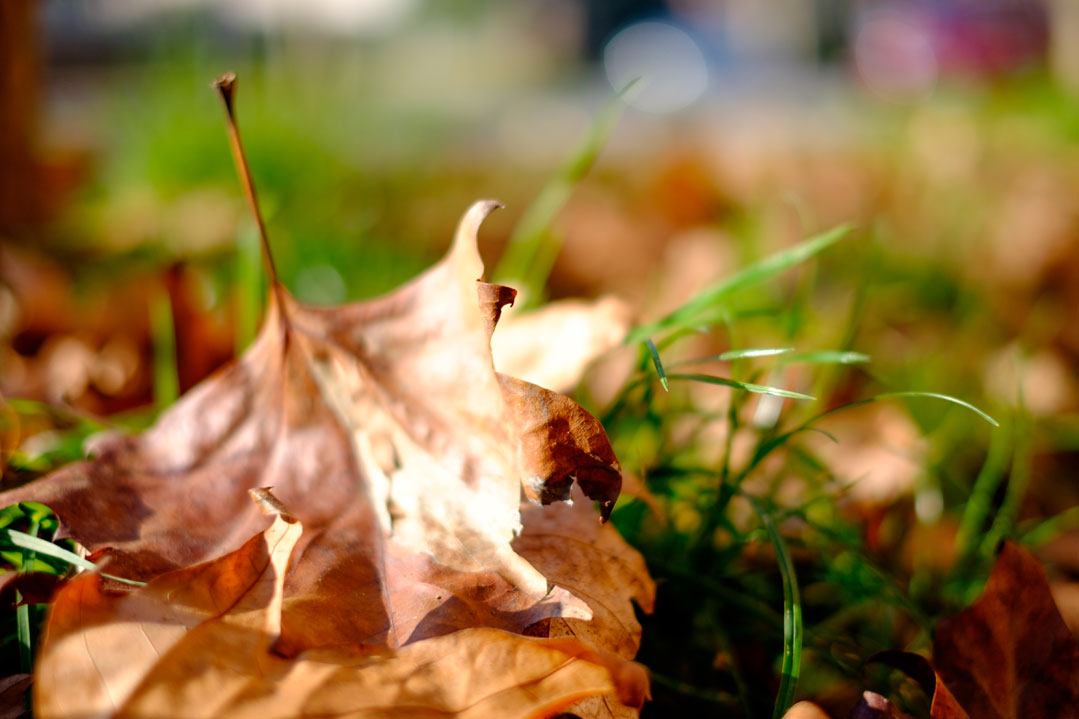
Fall leaves. | Photo courtesy of iStock
6) Don’t rake fall leaves. Rather than raking them, go ahead and mulch the ground with your leaves. Environmental designer Pablo Solomon explains that this organic layer returns leaves’ nutrients to the soil, resulting in a lusher yard come springtime. “Just allow them to decompose where they fall, or use them to create water-retaining compost,” he says.

Wheel barrow. | Photo by iStock
7) Grass-cycle. Impermeable soils—especially lawns—need more fertilizing and watering. It’s why Austin suggests mowing higher and allowing clippings to stay on the lawn, rather than bagging them for the landfill. “This serves as its own compost.” To the same end, Austin recommends aerating lawns yearly, so as “to allow water and oxygen to permeate the surface.”
8) Layer. Mulch constitutes any barrier between the soil and the atmosphere (think wood chips or straw). Applying a three-to-four-inch cold-weather layer to garden beds, Austin says, slows water’s evaporation, protects plant roots from wintry temperatures and sunlight, and helps to keep weeds from germinating. Landscape consultant Mike Rigby adds, “Leaf mold and pulled weeds, which will compost rapidly, make for the best mulches. Stay away from bark mulches, or painted products.”
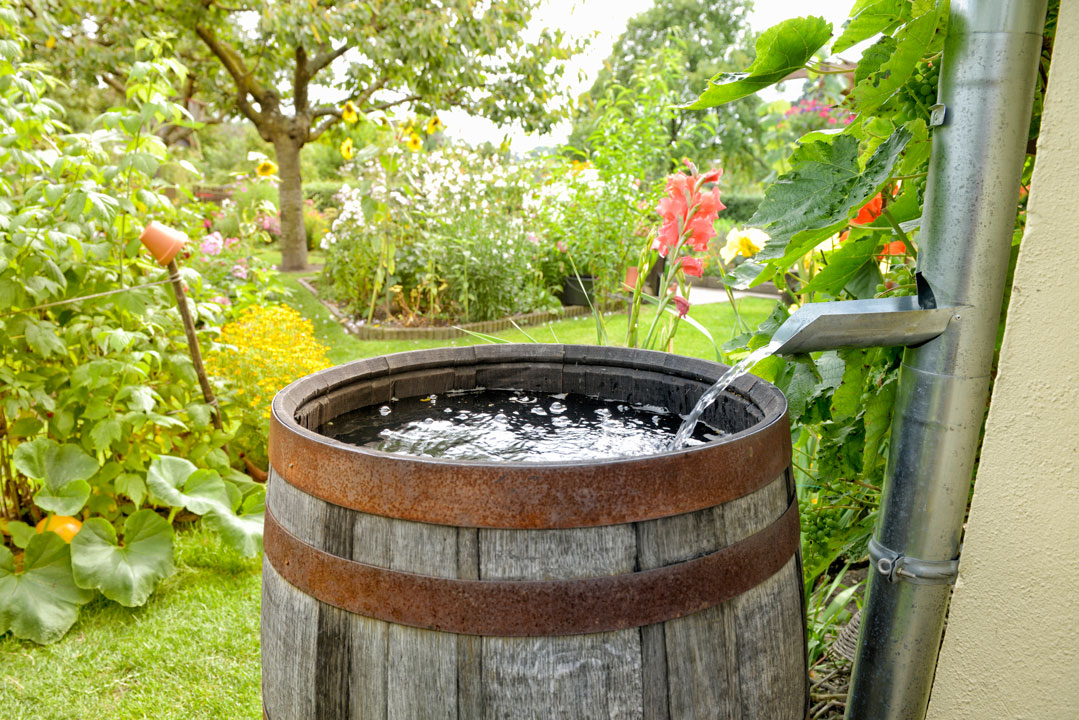
Rain barrel. | Photo courtesy of iStock
9) Collect fall rainwater. If you live in California and you have more than 2,500 square feet of landscape, the Water Efficient Landscape Ordinance requires you to practice infiltration—guiding rainwater to the ground, where it can permeate. And no matter where you live, using cisterns or rain barrels, which capture rainwater runoff from the roof and store it for later use, allows you to save money and water your yard sans irrigation technology come dry season.
Kristi Mailloux, chief marketing officer of AM Conservation Group, adds that outdoor plumbing leaks are huge contributors to water waste. “According to the EPA, 10 percent of homes have leaks that waste 90 or more gallons of water per year,” she explains. “And most leaks in the home are related to outdoor water faucets, because people don’t keep an eye on them—especially once temperatures drop.” Mailloux also suggests capturing the water you use to rinse off homegrown produce—and reusing it to water your fruits, veggies, and herbs.
10) Install permeable patios and walkways. You want your outdoor space conducive to strolling and lingering; however, pavers and patios are usually impermeable, meaning that during rainstorms, water will sheet off them and dump into storm drains rather than soaking into the soil and recharging the water table. Aoyagi suggests looking into gravel, decomposed granite, and concrete that’s manufactured to allow water to seep through.
11) Make your garden a rock star. Moisture in the soil accumulates around rocks, boulders, and other hardscapes, helping to stabilize the heat contained in plant roots, Henriksen says. Adds Solomon, “Creating a permeable, stacked-rock terrace wall can be especially fun in the winter, as you don’t have to worry about snakes, scorpions, and heat!”
12) Plant trees and shrubs. Especially in the South, West, and Southwest, fall is the ideal time to do so. “This gives plants all winter to adjust, and to develop roots,” Solomon explains. And wherever you live, Henriksen says, larger trees will provide shade to lower-growing plants, which will help prevent water loss and cool the area around your home, cutting your air-conditioning bill, too. “Even partial shade can make a huge difference,” she says.
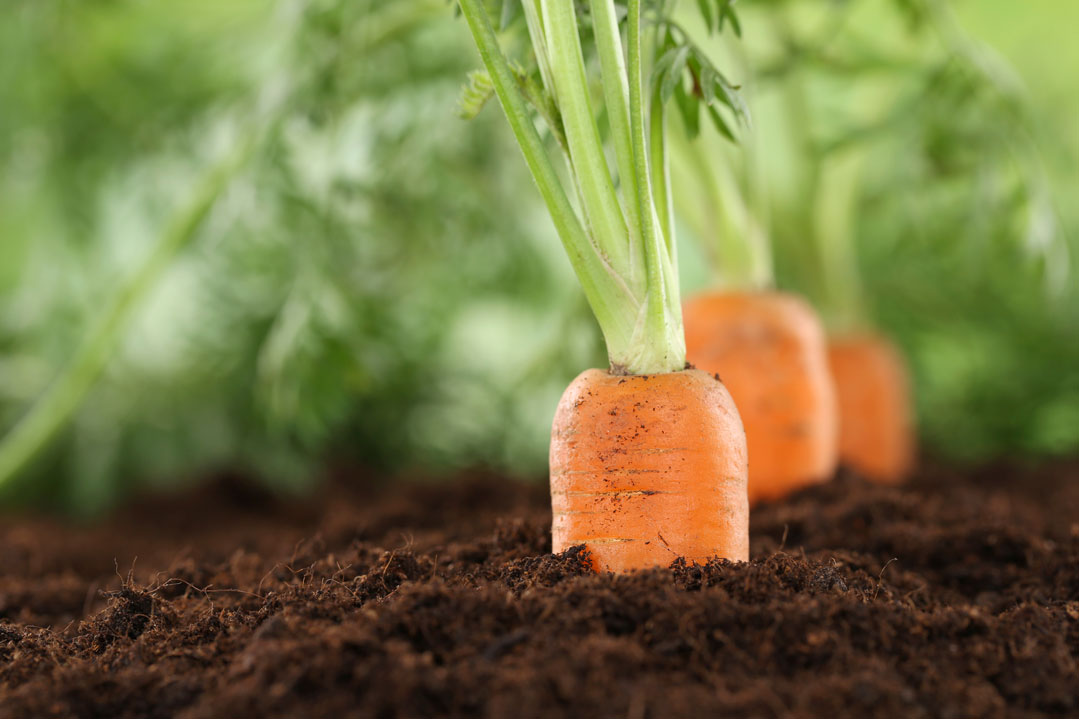
Good soil. | Photo by iStock
13) Know the real dirt. Barren soil has a tougher time retaining water. Your soil’s ability to sustain a multitude of different organisms can help hedge a yard against drought and temperature extremes. Soil is a mix of sand, silt, clay, and organic matter—including beneficial fungi and bacteria and decomposing plant materials. Rigby explains that the most sustainable soil holds water deep in the root zones, away from surface evaporation. To this end, he recommends fertilizing soil with manure, compost, or other organic materials.

Water-gauging devices. | Photo by iStock
14) If you must water, be smart about it. In an effort to make lawns and gardens appear as lush and inviting as possible, many people over-water. Mailloux says the best times to water are early in the morning or late in the evening, when there’s less evaporation. She also advocates for the use of moisture meters, designed to measure groundwater and help indicate how much water is necessary, and rain gauges, which measure the amount of rainfall in your garden. “This way, you only water if the rain hasn’t come on its own,” says Mailloux, who adds that several water utility companies now offer homeowners such options. Zoe Margetts of Waco, Texas–based landscapers The Grounds Guys adds that tensiometers—devices that keep your sprinklers from coming on unless soil is truly parched—are also handy. She says it’s extra important to mind your weeds when temperatures drop—as they guzzle water and compete with plants.
15) Consider going lawn-free. Your lawn is likely the biggest water guzzler on your property. Consider turning parts of it into flowerbeds or mulched islands. And if you’ve been thinking about ditching the traditional lawn altogether, know that fall is the ideal time to make the move. Kourik says to start by putting down a thick application of chicken, cow, or horse manure, or else a sprinkling of blood meal, an organic fertilizer rich in nitrogen. “Cover that whole area with cardboard—pieces should overlap by four to six inches—and cover that with two to four inches of mulch,” he says. “That’ll rot out the yard.” Which means that come springtime, you’ll have no more grass, but you’ll have a whole lot of healthy soil that’s conducive to planting shrubs and trees. “Opt for cover plants that are dense and at least six inches high, such as lavender or vertical rosemary,” Kourik advises. “You’ll want to avoid lower ones, because water-guzzling weeds can grow through them.”
 The Magazine of The Sierra Club
The Magazine of The Sierra Club
